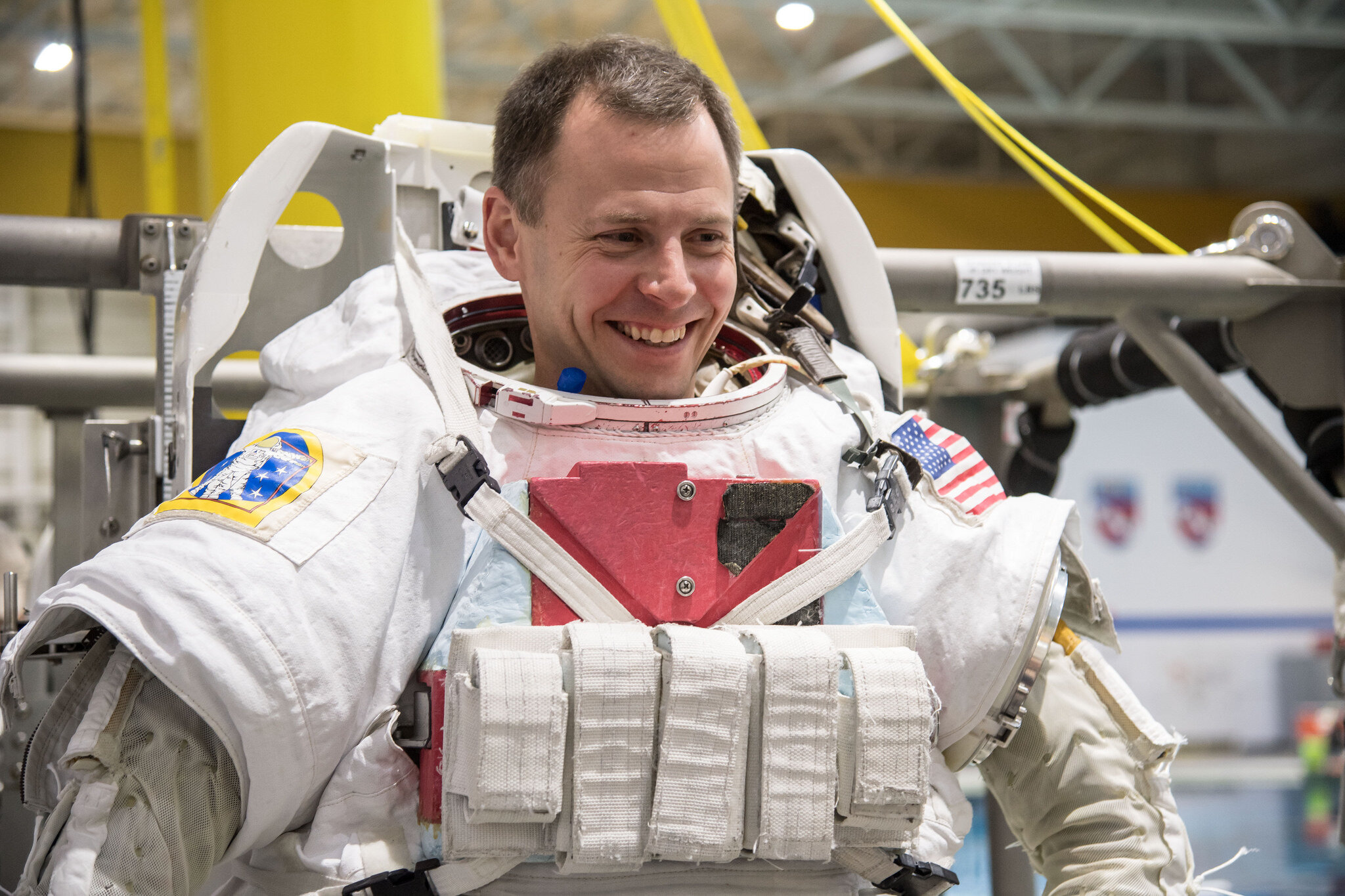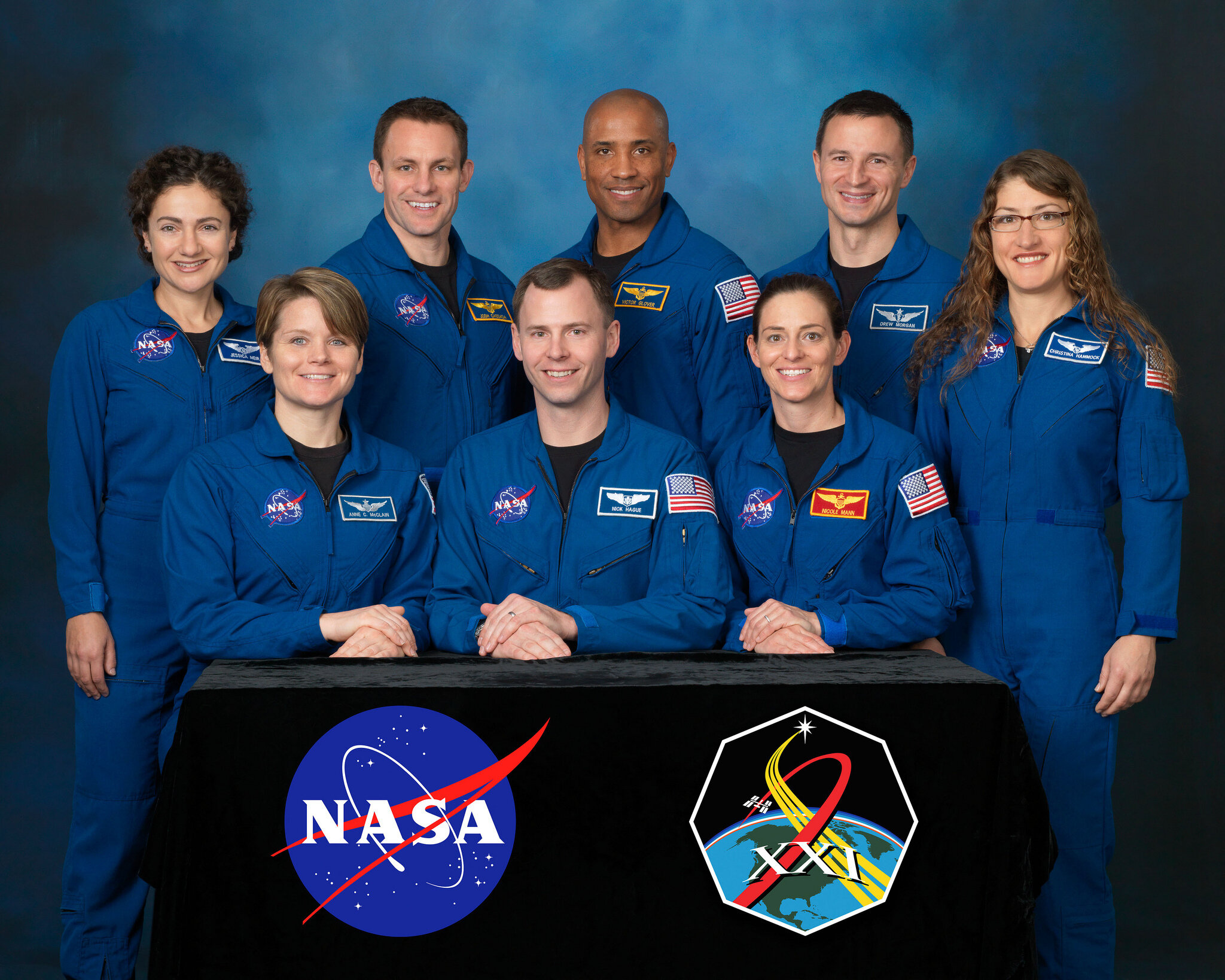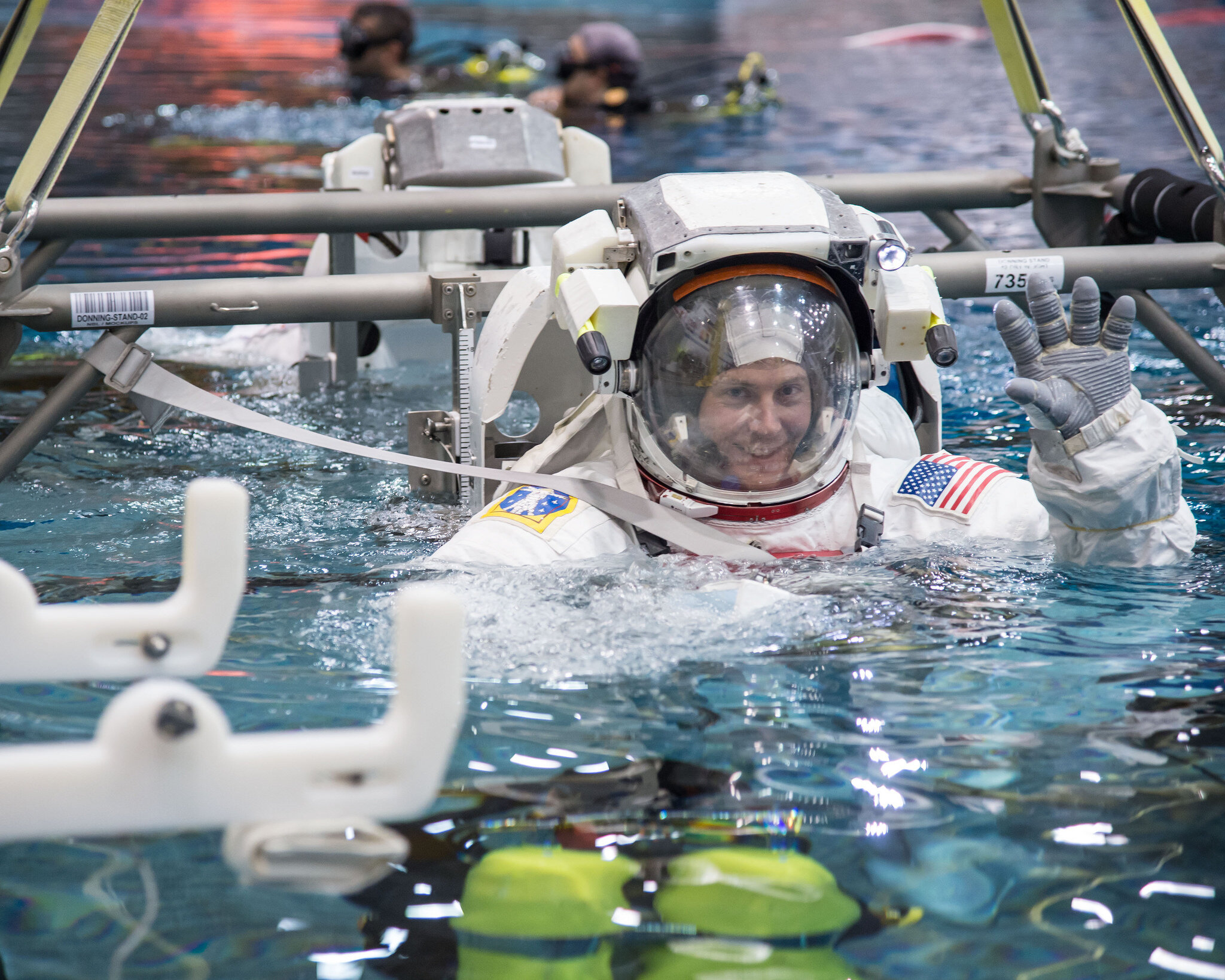Let’s Do Launch: After Stone Harbor This Summer, It’s Off to His Space Mission
Most people consider “out of this world” a phrase. Nick Hague will soon call it his workplace.
The perennial Stone Harbor summer visitor will fulfill a childhood dream later this year. The NASA astronaut will view Earth from an altitude of 250 miles while circling it 16 times a day with International Space Station’s Expedition 57/58. After the launch from Russia, scheduled for September, the Kansas native will serve as flight engineer for this half-year mission aboard the ISS, a habitable artificial satellite operated by several countries.
Two Russian cosmonauts will join Hague for the scientific research mission in this mammoth vehicle. You want to talk big? The space station is roughly the size of a football field, weighs nearly a million pounds, has miles of cable and travels about 17,500 mph.
The ISS serves as a microgravity and space-environment research laboratory for biology, physics and astronomy, among other fields.
Before the final push, Hague will receive two respites in Stone Harbor – one week in late June and another in July. Here, he can choose shorts instead of a 300-pound spacesuit, walk through town rather than orbit it and perhaps view the beach as headquarters. The Seven Mile stopovers will include visits to the Stone Harbor Yacht Club, area restaurants and other vacation activities.
They will be welcome breaks for Hague, his wife, Catie, an Air Force lieutenant colonel, and their children, Hudson and Asher. The island visits have long served as reunions with in-laws Charlie Devlin and Clare Keenan, Stone Harbor homeowners with ties dating back to the 1950s. Hague has vacationed here for 20 years.
“It’s so important to make it to Stone Harbor during the summer because that’s a chance for all of us to be together,” Hague said from NASA headquarters in Houston, his current base and family home. “We are really looking forward to being there. Stone Harbor is a wonderful place for us to take a rest and spend time with each other. It provides us that special chance to declutter, have fun and take a rest from the schedule, because my travel is crazy.”
This mission has been years in the making for Hague. Seven Mile Times readers got a glimpse of that in 2013, when he was featured for becoming one of eight candidates in a field of 6,000 chosen for the 21st NASA astronaut class. In a five-year blink of an eye, he subsequently marched toward this goal. There were scientific and technical briefings, instruction for International Space Station systems, spacewalks and schooling that covered Russian language, physiological training, T-38 flights, water, wilderness and survival programs. Hague completed astronaut candidate training in July 2015. About a year later, he was assigned the upcoming mission. For the last year, he has visited several countries and simulated conditions for this assignment.
“The training has been a blast,” he says. “Different countries have built diff-erent modules for simulation. Japan has one, Germany has one, as does Russia, so I have been to them. In the Russian center, we have worked pretty solidly together, with dozens of four-hour simulations to rate every system.”
The practice runs alone are exhilarating, he says. A vacuum chamber simulates the feel of the space suit.




“It has all the air removed, so the suit is forced to perform its job,” he says. “Keeping the body surrounded by breathable air at a sufficient pressure is important. It’s kind of like being inside a person-shaped balloon. Part of the training is learning how to work in that environment and stay comfortable. “
Once in space, Hague will be able to communicate directly with Houston, set up video-conferencing with his family and have a scheduled eight-hour workday. The mission will produce hundreds of projects aimed at improving human health. Activities measured in the realm of weightlessness can aid in matters like enhancements to bone density, or a new vaccine.
“Bones need gravity to help them stay strong,” he says. “Just like with muscles, if you don’t use them, they go away. In weightlessness, bones don’t get the impact they need to stay strong, so we have to exercise two hours every day to give them the stimulus they need to stay healthy for when we come home. Figuring out the best combination of exercises, diet and medication is one of the many things we are researching up on ISS.”
In preparation for their mission, Hague and cosmonaut Alexey Ovchinin, who will serve as the commander, have worked together for months. Their interaction is a poignant and stark contrast to governmental tensions between the countries.
“Alexey and I have been working shoulder-to-shoulder and we will be depending on each other to work out successfully,” he says. “What we have experienced transcends a lot of the geopolitical developments, we fly well below the turmoil reported in the press. We are all advancing the interest of humanity. You think of how remarkable it is that for my pressure suit, there is an intricate stitch put on there by an old Russian lady. My life may depend on it, and I didn’t even know her before this.”
The mission brings Hague full circle. He always had an interest in science and new equipment. In past years, that meant test flights on fighter jets relative to new bombs. Here, the intersection of science and technology won’t concern combat. It will benefit all society.
Two factors have driven Hague’s success. Laurels like being a top U.S. Air Force Academy graduate, top flight test engineer for its test-pilot class, six air medals and numerous campaign and service awards ticketed him for NASA. Hague’s family is the other, intangible force.
A career like this requires family “ground control.” Nick and Catie weave an unconventional life journey by accepting, no pun intended, space.
Both graduated from the Air Force Academy and knew the logistics of long separations. When Catie was deployed to Iraq as a Pentagon public-affairs spec-ialist, handling media interviews and publicizing the troops a few years back, Nick was home in Colorado Springs with Hudson, who was 15 months old at the time, for about a year.
When the dynamic flip-flopped five years ago, with Nick earning entry to NASA, the opposite scenario emerged.
“Because my move happened quickly, it took a little while for Catie to receive an assignment to Houston,” he says. “She stayed working in the Pentagon for a year, living with the boys in D.C., while I was training in Houston. Then she was able to get assigned to an ROTC detachment at Texas A&M in College Station [about two hours from the Johnson Space Center]. She lived there with the boys for two years, and we commuted to see each other on the weekends. Finally, in 2016, she was assigned as the commander of University of Houston Air Force ROTC, and we were all able to live under one roof.”
That was some high-wire act, and it might explain the oasis Stone Harbor offers. Here, Hague won’t have to be NASA Nick. After the time spent in Stone Harbor, it’s up, up and away to his out-of-this-world job.

